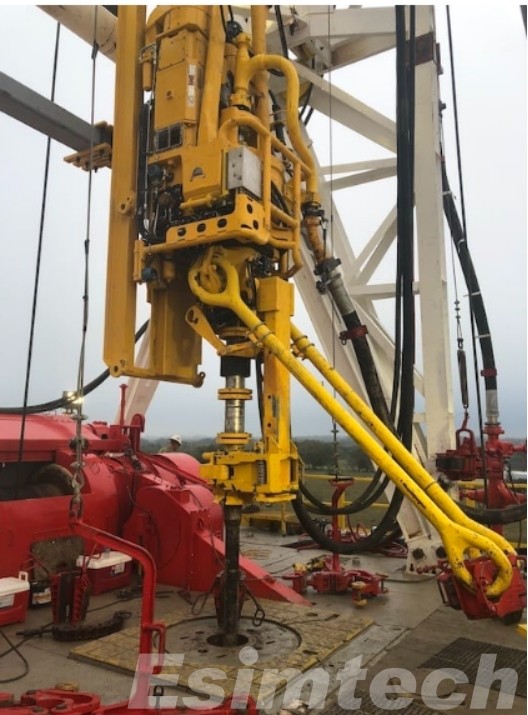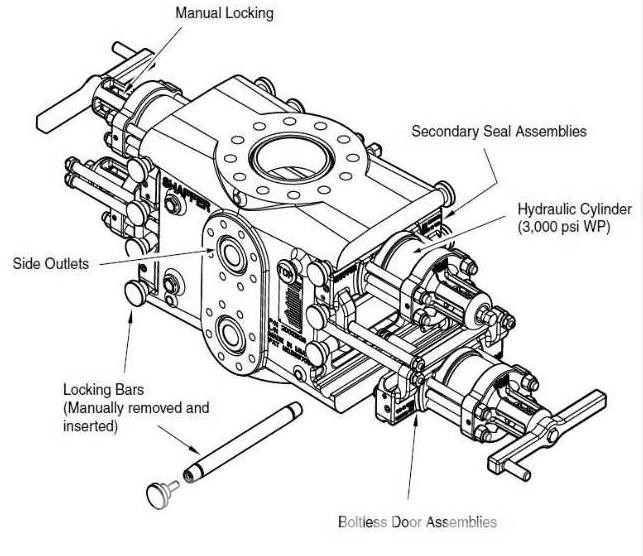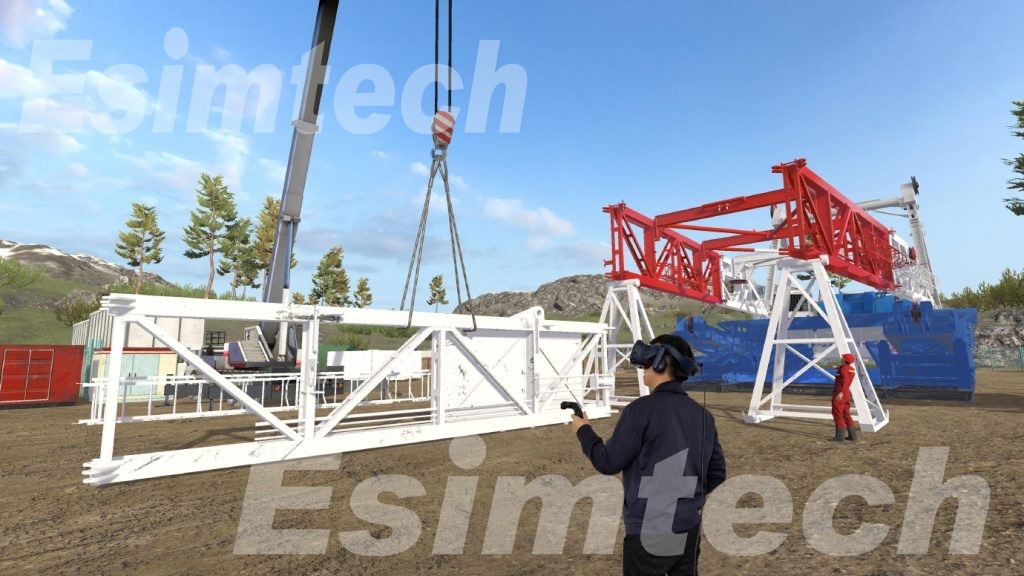How to Do Land Oil Rig Installation
Land oil rigs, also known as drilling rigs, are the workhorses of the oil and gas industry. These massive structures play a crucial role in extracting valuable resources from deep beneath the earth’s surface. Installing a land oil rig is a complex process that requires careful planning, specialized equipment, and a strong focus on safety. This article will guide you through the key aspects of land oil rig installation.

Land Oil Rig Components
Land oil rigs are undeniably impressive feats of engineering. They represent a meticulous integration of mechanical and electrical systems designed to efficiently extract oil and gas from deep underground reservoirs. To achieve this, a land oil rig relies on a complex interplay of various critical components, each playing a vital role in the drilling process. Here’s a more detailed exploration of these key elements:
- Derrick: The derrick is the most prominent component of a land oil rig, acting as its towering backbone. Typically constructed from high-grade steel, this structure provides a vertical track for the drill pipe and other equipment to be raised and lowered during drilling activities. The design of the derrick is crucial, ensuring it can withstand the immense weight and dynamic forces encountered throughout the drilling process.
- Drawworks: Often referred to as the “workhorse” of the rig, the drawworks is a powerful winch system powered by robust electric motors or internal combustion engines. Its primary function lies in precisely raising and lowering the drill pipe, casing strings, and other critical equipment within the wellbore. The drawworks boasts exceptional pulling force capabilities and offers meticulous control over the drill string’s speed, enabling efficient and controlled drilling operations.
- Top Drive: This innovative rotary system sits atop the derrick, establishing a direct connection with the drill pipe. Unlike traditional rotary tables positioned at the rig’s base, the top drive provides a more efficient method by transmitting rotational power directly to the drill pipe, eliminating the need for a kelly bar (a long, square shaft) used in older rigs. The top drive’s variable speed control allows for precise drilling and enhanced hole cleaning, contributing to a more streamlined operation.

- Mud Pump: The mud pump serves as the heart of the rig’s circulating system, playing a vital role in wellbore maintenance. This crucial component is responsible for the continuous circulation of drilling mud, a specially formulated mixture of water, clay, and various additives. Drilling mud fulfills several critical functions:
- Cooling and Lubrication: The mud effectively cools and lubricates the drill bit, mitigating friction and preventing overheating, which is crucial for maintaining optimal drilling performance.
- Removal of Cuttings: The mud acts as a carrier, transporting rock fragments (cuttings) generated by the drilling process back to the surface for proper disposal. This continuous removal of cuttings is essential for maintaining a clean wellbore and ensuring efficient drilling progress.
- Wellbore Pressure Maintenance: Drilling mud plays a critical role in maintaining hydrostatic pressure within the wellbore. This helps prevent formation fluids from entering the well uncontrollably, ensuring wellbore stability and safety during drilling operations.
- Drill Pipe: This essential component forms the backbone of the drilling string. Drill pipes are typically long, hollow sections of high-strength steel, meticulously designed to withstand the demanding downhole environment. Multiple drill pipes are screwed together to create a long, continuous string that reaches the desired drilling depth. The drill bit is attached to the bottom end of the drill pipe, while the top drive connects to the upper end, enabling the rotation of the entire drilling string and facilitating efficient drilling.
- Blowout Preventer (BOP): Safety is paramount in the oil and gas industry, and the blowout preventer (BOP) serves as a critical safeguard designed to prevent uncontrolled releases of oil and gas from the wellbore. A BOP stack typically consists of several hydraulically operated rams that can seal the wellbore in various scenarios, such as loss of circulation or equipment failure. The BOP acts as the last line of defense against potential blowouts, protecting personnel, the environment, and valuable equipment during drilling operations.

By delving deeper into the functionalities of these key components, we gain a profound appreciation for the intricate choreography involved in land oil rig operations. Each component plays a vital role, working in unison to efficiently and safely extract valuable resources from deep within the earth’s core.
Land Oil Rig Installation Process
Land oil rig installation is a multi-stage process that demands meticulous planning, specialized equipment, and a highly skilled workforce. Here’s a closer look at each step involved, along with some of the challenges that might arise:
Site Preparation (2-4 Weeks)
- Geotechnical Survey (1 Week): The chosen location undergoes a thorough analysis using specialized equipment to determine its suitability for the rig’s weight and the drilling operation’s demands. Soil composition, stability, and potential presence of underground utilities are meticulously assessed.
- Land Clearing and Leveling (1-2 Weeks): Vegetation is removed using bulldozers and other heavy machinery. The land is then graded and leveled to create a flat, stable platform for the rig. Depending on the terrain, this might involve excavation to remove excess soil or filling low-lying areas for a uniform base.
- Access Road Construction (1-2 Weeks): A sturdy access road is built to allow for the safe and efficient transportation of heavy equipment and materials to the installation site. This road needs to be wide and strong enough to handle the weight and dimensions of oversized rig components.
- Utility Planning (Continuous): Throughout the installation process, provisions are made for essential utilities like water for drilling operations, electricity to power the rig’s machinery, and sanitation facilities for the crew. This might involve temporary installations or connecting to existing infrastructure based on the site’s remoteness.
Foundation Construction (1-4 Weeks)
- Concrete Foundation (Slab or Pile Design): For massive rigs or locations with weak soil conditions, a concrete foundation is constructed. This can involve pouring a thick concrete slab that can be several feet deep, or driving steel piles deep into the ground for additional support. The specific design and construction time depend on the weight of the rig and the soil characteristics.
- Steel Beam Foundation: For lighter rigs or more stable soil conditions, a network of prefabricated steel beams is used to create a solid base. This option offers a faster installation time compared to concrete but might have limitations in terms of weight capacity. The steel beams are secured to each other and anchored to the ground to ensure stability.
Derrick Assembly (1-2 Weeks)
- Section Transport: The pre-fabricated derrick sections, typically made of high-strength steel, are meticulously transported to the installation site using specialized heavy-haul trucks with multiple axles and oversized trailers. These sections can be quite large and require careful planning for safe transportation on public roads.
- Crane Operations: Powerful cranes, carefully positioned around the designated assembly area, meticulously lift and precisely position the individual derrick sections. Riggers, using hand signals and clear communication, guide the crane operators to ensure perfect alignment and avoid any potential damage during the lifting process.
- Alignment and Bolting: Highly skilled ironworkers meticulously connect the derrick sections using high-strength bolts and specialized tools. Precise alignment is crucial for the overall stability and functionality of the rig. Once assembled, the derrick undergoes rigorous inspections to ensure all connections are secure and meet safety standards.
This detailed breakdown of the initial stages of Land Oil Rig Installation highlights the importance of meticulous planning, specialized equipment, and a highly skilled workforce.

Safety Considerations When Install a Land Oil Rig
Land oil rig installation is a complex undertaking, and safety is paramount throughout the entire process. A single misstep or oversight can lead to serious injuries, property damage, or even environmental consequences. Here’s a breakdown of key safety considerations to ensure a successful and hazard-free installation:
- Rigging and Lifting Operations: Rigging crews responsible for lifting and maneuvering heavy equipment components must be properly trained and certified. They should use appropriate slings, shackles, and lifting procedures to prevent equipment failure or accidental drops.
- Fall Protection: Working at elevated heights on the rig structure poses a significant fall risk. Guardrails, safety nets, and personal fall arrest systems (harnesses and lifelines) must be readily available and properly used by all personnel working above ground level.
- Fire Prevention: A comprehensive fire safety plan needs to be in place, including designated fire breaks, fire extinguishers readily available at strategic locations, and crew training on proper fire response procedures. Flammable materials should be stored safely, and hot work activities like welding or cutting should be strictly controlled with fire watches in place.
- Electrical Safety: Only qualified electricians should handle all electrical installations and ensure proper grounding to prevent electrical hazards. Damaged electrical cords or faulty equipment should be identified and addressed immediately.
- Environmental Compliance: Waste management and spill prevention plans are crucial to minimize environmental impact during installation. Proper procedures for handling used drilling fluids, lubricants, and other potentially hazardous materials should be followed. Workers should be trained on spill response protocols in case of accidental releases.

Incorporating oil rig installation simulation into the planning process can significantly enhance safety. These simulations utilize specialized software and virtual reality (VR) technology to create a realistic representation of the installation process. Workers can then virtually practice lifting operations, equipment assembly, and emergency response procedures in a safe, controlled environment. This allows for identifying potential hazards and implementing corrective measures before actual installation begins, minimizing risks and improving overall safety outcomes.
Conclusion
Land oil rig installation is a complex undertaking that requires expertise, specialized equipment, and a rigorous commitment to safety. By understanding the rig components, the installation process, and the essential safety considerations, involved parties can ensure a successful and hazard-free operation.
